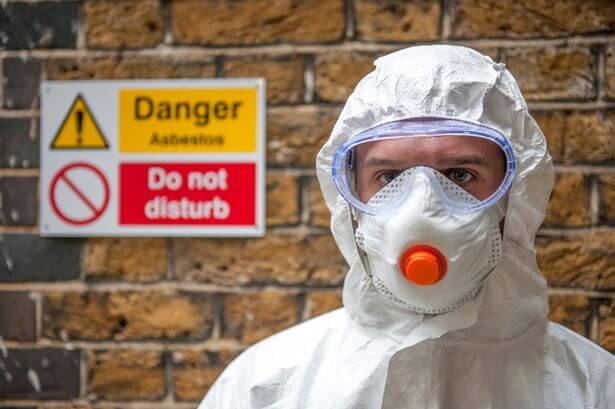When working on a loft conversion, we sometimes stumble upon properties that contain hazardous or potentially dangerous substances such as mould and of course, asbestos. As part of our process, we ensure that anything that could be harmful is 100% removed before proceeding with any project. This may include hiring in a specialist to help remove asbestos and making sure that your extension is clean from day one.
Asbestos is used to refer to a combination of six naturally occurring fibrous minerals. These include:
- Chrysotile
- Actinolite
- Amosite
- Tremolitle
- Crocidolite
- Anthophyllite
From all of these, amosite and chrysotile are amongst the most common forms of asbestos.
The fibres found in asbestos are microscopic. Despite this, asbestos is extremely resistant to fire and many chemical reactions and breakdowns, as well as being very durable. Because of this, asbestos was a popular choice to use in a number of industrial and commercial capacities. Asbestos was the choice of material of a variety of products such as, roofing shingles, ceiling materials, titles for the floor, cement compounds, automotive parts and textile products.
Nowadays, asbestos is a strictly regulated product. This is because exposure to this (now known to be) toxic material, can cause and be liked to a number of several respiratory and lung conditions.
Why is Asbestos Bad For You?
As discussed, asbestos was previous a widely used material. The use of asbestos, however, declined in the late 1970s when research had revealed that asbestos could pose a threat to health and safety. Asbestos is now classed as a known human carcinogen (can cause cancer).

What makes me hazardous is the property of durability, which is ironically what made asbestos so desirable to manufacturers. Since the fibres of asbestos are so microscopic, they are very easily inhaled. If you inhale the fibres, they stick to the respiratory system, which includes the inner cavity tissue and the lining of the lungs – therefore it is a very dangerous substance for human health. Because of the rigid nature of the fibres, they tend to get lodged in the soft internal tissue of the respiratory system. Unfortunately, the fibres are not easily broken down by the body or expelled, so the damage can be fatal.
It has become clear that there is not one type of asbestos that is safe for exposure and there is also no level of exposure which is safe. Anyone who comes into contact with asbestos in some capacity is at potential risk of serious health complications surrounding the respiratory system.
Asbestos Removal
The removal of Asbestos is normally required before a building which older in age is demolished. This must happen prior to any renovation that could disturb asbestos-containing materials or when materials containing asbestos are going to be or have been damaged.
There will be an asbestos removal contractor. He or she will determine whether a Health and Safety Executive (HSE) license is required for the job to be completed. An HSE license is always required when there is a strong probability that asbestos fibres will be released into the air during the work scheduled to take place.
The removal contractor will assess what is necessary for removal. They will also perform the removal work, and dispose of the hazardous material so that you do not have to worry about any exposure to the substance. The video from The Telegraph below shows how to safely and successfully remove asbestos:
Handling Asbestos
As already stated, you will not have to worry about directly handling asbestos if you have a removal contactor. However, this is some information on handling asbestos in general.
Since asbestos has toxic properties and its classified as a human carcinogen, handling asbestos must be done with great care. It’s important to note that when the asbestos is in good condition, it does not usually pose a threat. Nevertheless, worn or damaged asbestos poses a huge risk to our health and safety. This is due to the fact that fibers may flake off and become airborne and it becomes possible for anyone in the area to inhale these toxic fibres, which in turn, can cling to the respiratory system and in the chest.


